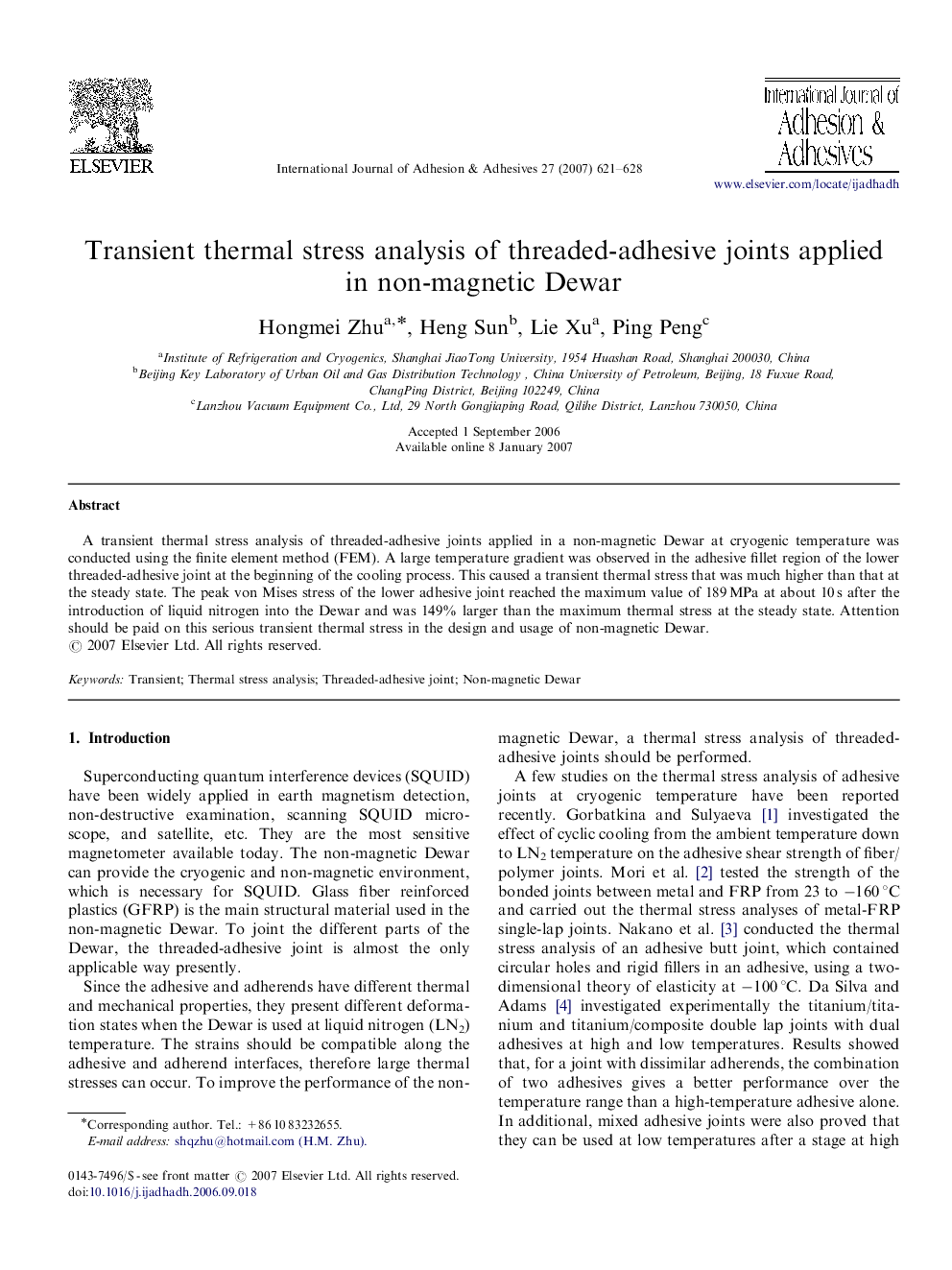| Article ID | Journal | Published Year | Pages | File Type |
|---|---|---|---|---|
| 777492 | International Journal of Adhesion and Adhesives | 2007 | 8 Pages |
A transient thermal stress analysis of threaded-adhesive joints applied in a non-magnetic Dewar at cryogenic temperature was conducted using the finite element method (FEM). A large temperature gradient was observed in the adhesive fillet region of the lower threaded-adhesive joint at the beginning of the cooling process. This caused a transient thermal stress that was much higher than that at the steady state. The peak von Mises stress of the lower adhesive joint reached the maximum value of 189 MPa at about 10 s after the introduction of liquid nitrogen into the Dewar and was 149% larger than the maximum thermal stress at the steady state. Attention should be paid on this serious transient thermal stress in the design and usage of non-magnetic Dewar.
